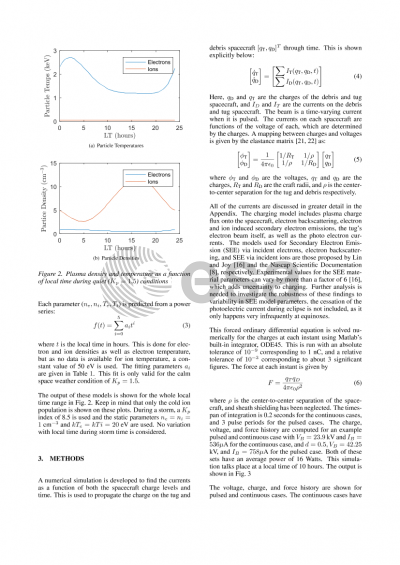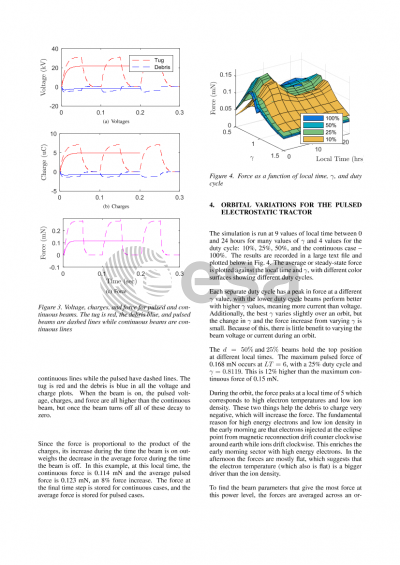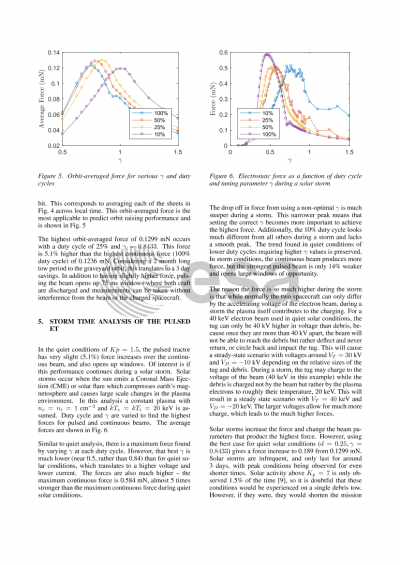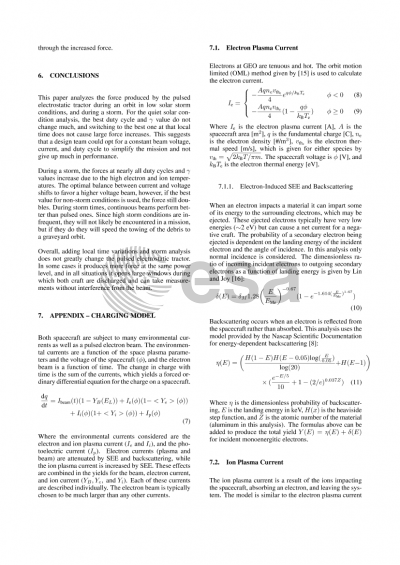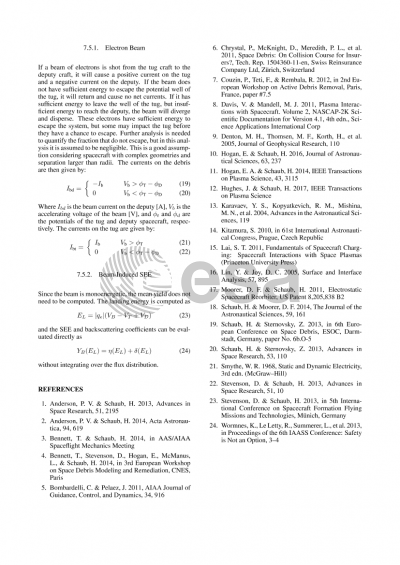Document details

Abstract
ABSTRACT
The Electrostatic Tractor (ET) has been proposed to touchlessly pull large, tumbling Geosynchronous (GEO) debris to a disposal orbit. Here an electron beam is emitted from the tug and aimed at the debris object to charge it negatively. The positively charged tug thus creates an attractive force to change the debris’ orbit. A constant separation between tug and debris is maintained with low-thrust propulsion. Prior work has studied the performance if a continuous electron beam is used, and found that using 10’s of Watts of electrical power can reorbit multi-ton debris objects in 2-3 months or faster. More recently the use of a pulsed electron gun has been investigated with a fixed nominal GEO space weather scenario, and found 2 benefits of a pulsed approach. First, tug force performance per power used can be improved, and the off-pulsing windows can assist when considering the low-thrust station keeping requirements. This paper studies the pulsed ET performance if local GEO plasma variations are considered for both calm and stormy GEO space weather conditions. Even on a calm day the local GEO plasma environment can vary drastically over an orbit. On interests is how these variations impact the ideal pulsing duty cycles and electron beam energy levels.
The ET performance is dependent on the local space weather plasma properties. The GEO space weather can vary drastically even over a nominal 1-day orbit. Denton et. al. discuss the 10-year averaged GEO space weather conditions. The hotter plasma typically requires less beam current to achieve the optimal ET force. However, the performance variations between a nominal beam current and a time-varying optimal current are found to be small with a medium level Kp index. With hotter plasma a nominal beam current might lead to excessive tug charging and no debris charging.
A recent consideration to the ET concept is pulsing the electron beam. This gives small force efficiency increases in certain power and voltage regimes, but the current analysis is confined to one particular set of plasma parameters in that study. In a re-orbiting scenario, the plasma parameters vary considerably over the course of each orbit. Additionally, solar storms can drastically affect the plasma parameters at GEO. Although such storms are short lived (hours) to the time spent re- orbiting (months) they may have considerable impact on the pulsed ET performance. This paper investigate the pulsed ET performance by including analysis of solar storms and plasma temperatures and density changes over the course of an orbit. On interests is how these variations impact the ideal pulsing duty cycles and electron beam energy levels.
Preview


